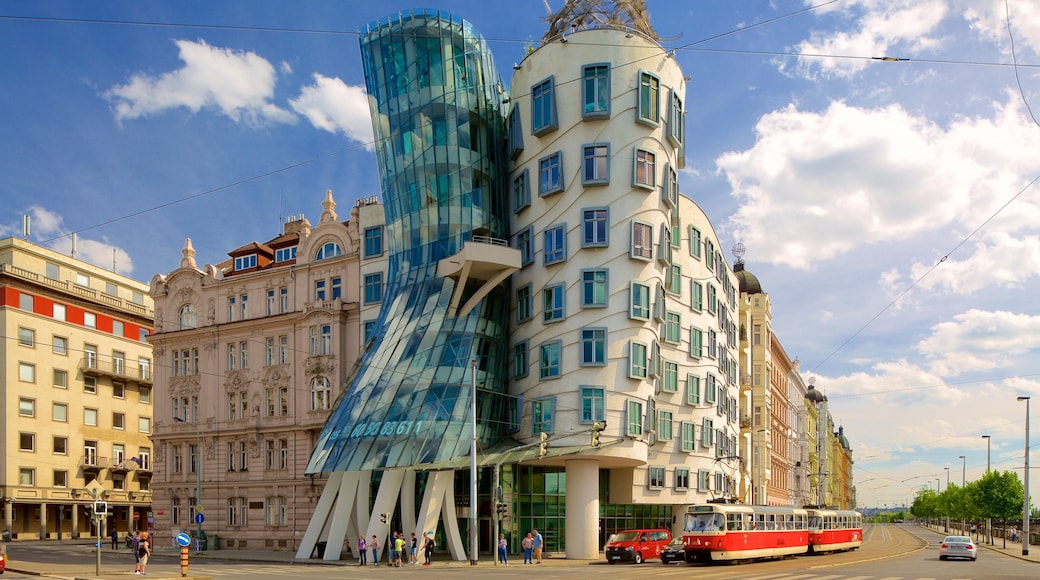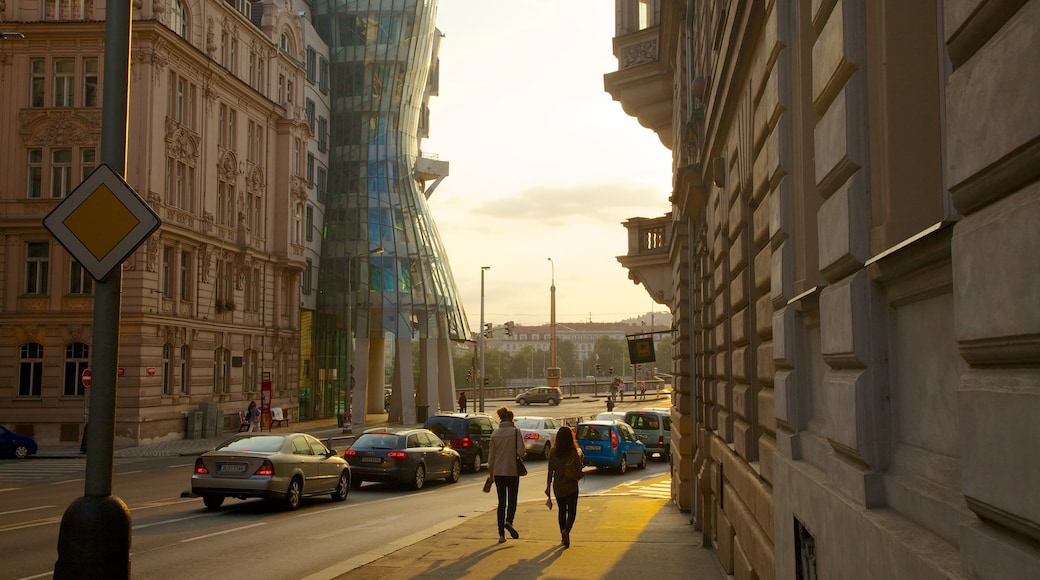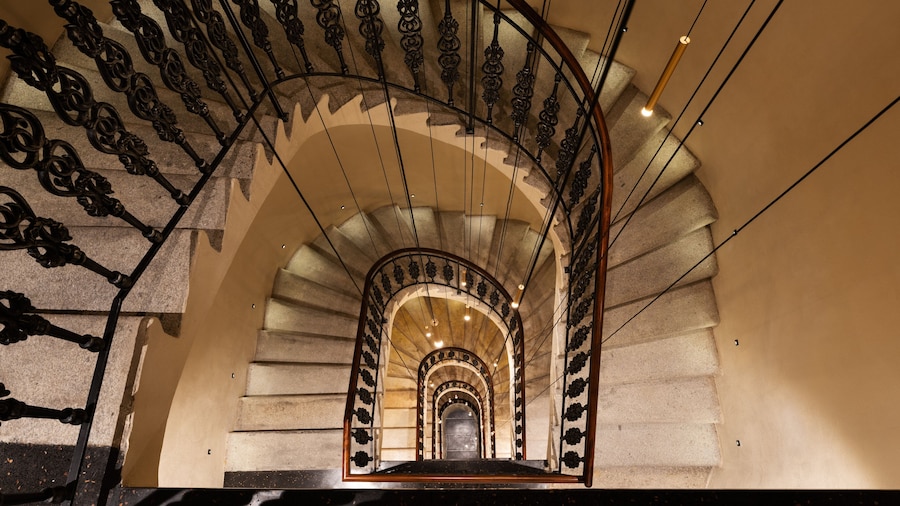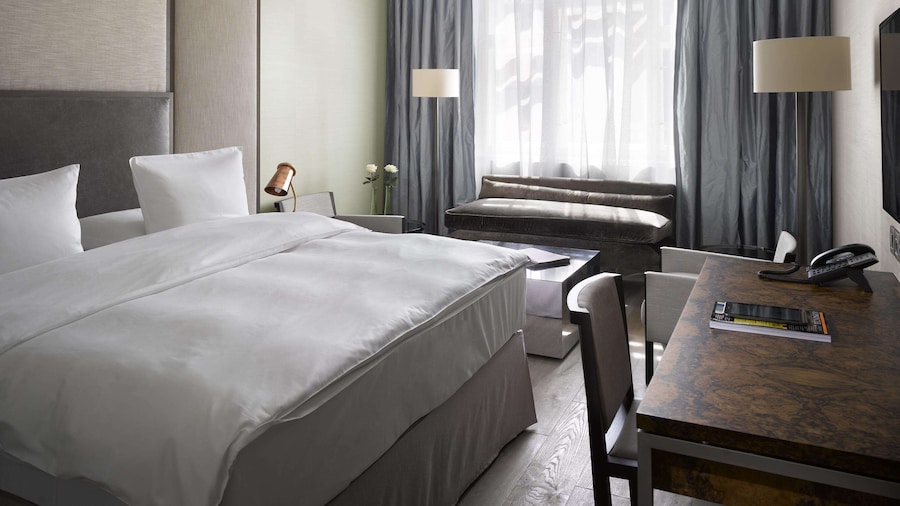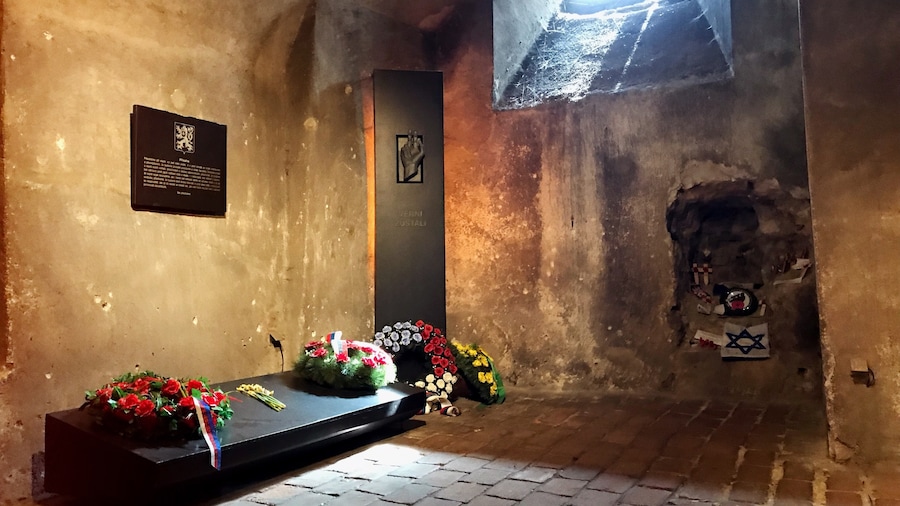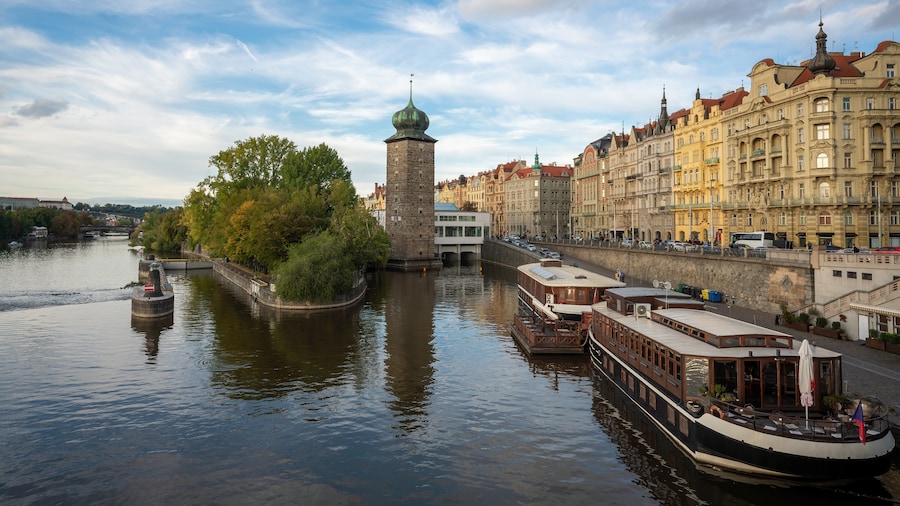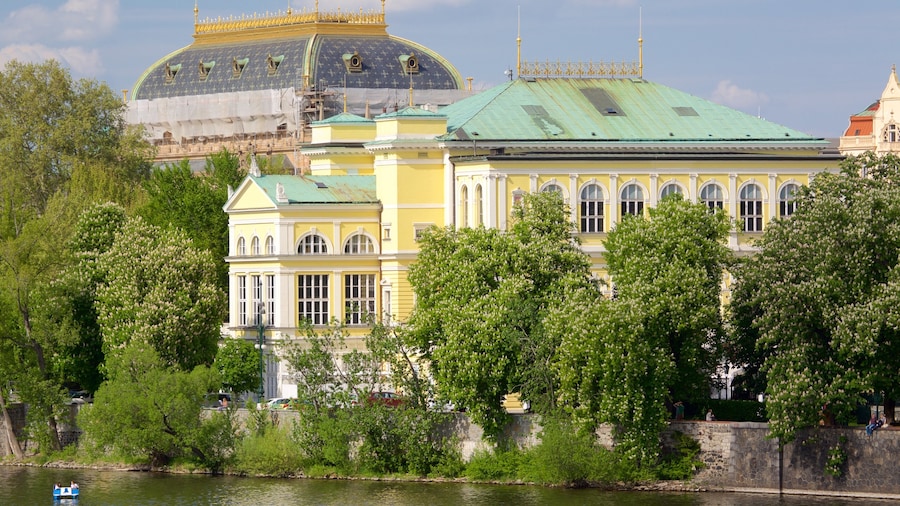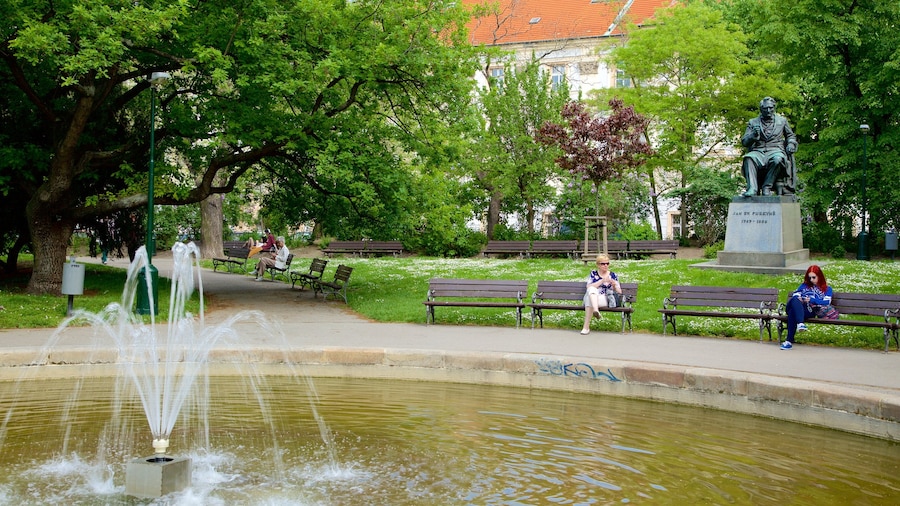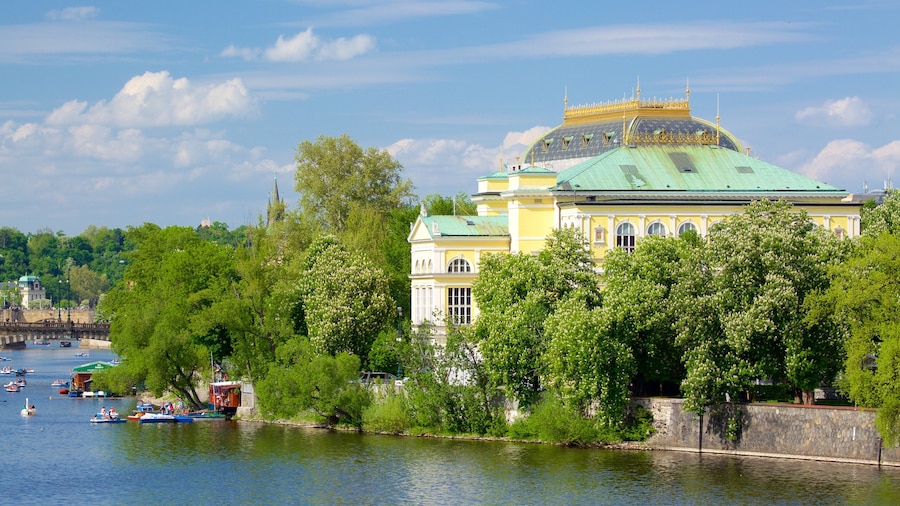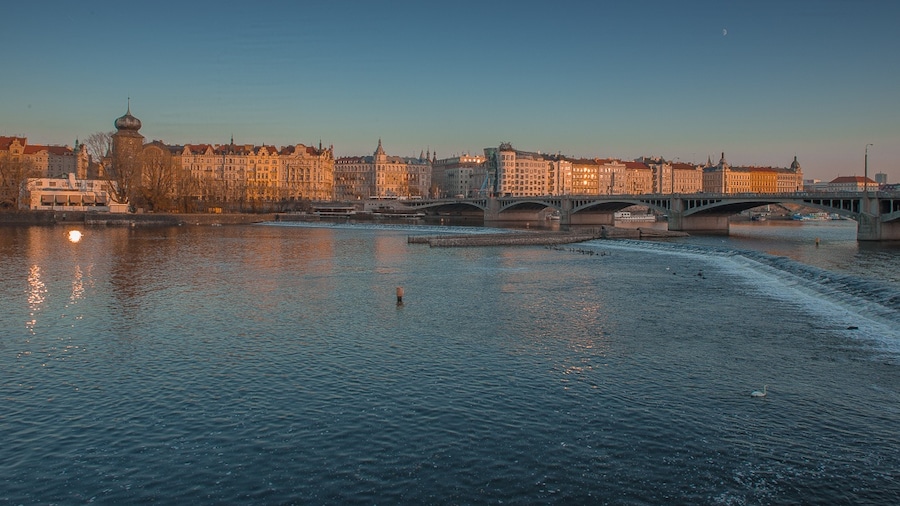This modern building, which houses a bar and restaurant, stands out from Prague’s traditional cityscape.
In a city with a rich history of architecture, there is no building more controversial than the iconic Dancing House (Tančící Dům), built between 1992 and 1996. The curved, B-shaped building, made largely of glass, stands out from the old buildings surrounding it. Visit Dancing House to see a unique feat of architecture or dine in its popular restaurant. View Dancing House from a distance so you can appreciate just how striking it looks against the buildings in New Town. Dancing House’s design is a good example of deconstructivism, a style characterized by controlled chaos and distortion. The contrast between the deconstructivist Dancing House and the baroque and art nouveau buildings around it makes for a stunning architectural photo.The Czech-Croatian Vlado Milunić and Canadian Frank Gehry are the architects behind the project. The duo met with much opposition to the building because of how it stood out. Despite that initial resistance, Tancici Dum, as the Czechs call it, became a much-loved landmark of Prague. The building was even featured on a Czech coin in 2012.Once you’ve admired the Dancing House’s unpredictable architecture from the outside, it’s time to step inside. Take the elevator to the rooftop terrace to enjoy a meal at one of Prague’s premier dining venues.Savor the modern European dining experience while you watch the sun go down over the city, with views across to Prague Castle.The rest of the Dancing House building is closed to the public.Dancing House is located in the New Town, and can be reached on foot from Wenceslas Square in 15 minutes. You can also get to the building by metro or tram from various other central attractions. Check the Tancici Dum website, or telephone ahead, for information about opening hours.
